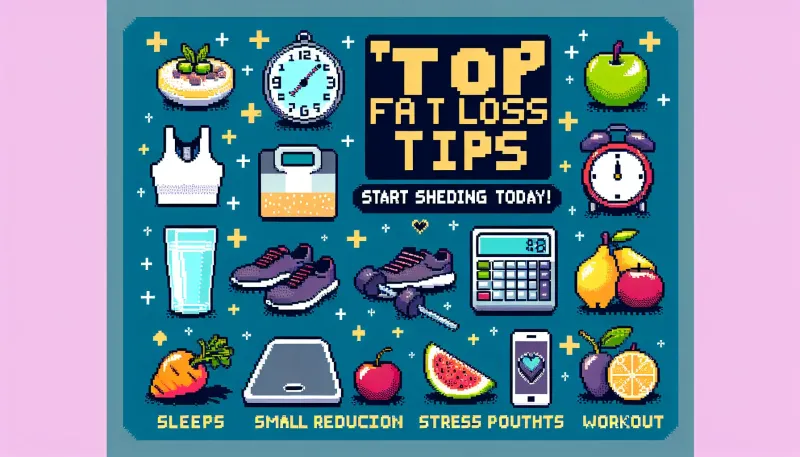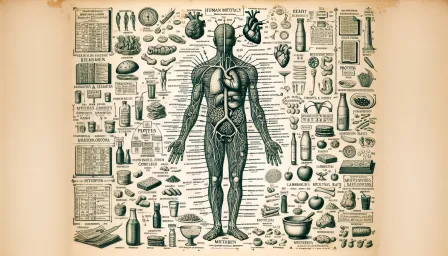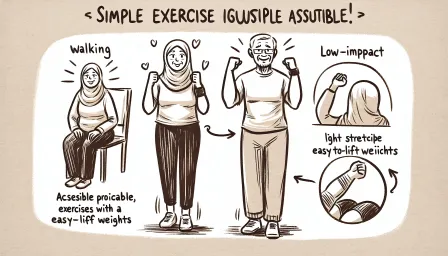Top 10 Fat Loss Tips for Beginners: Start Shedding Pounds Today!

Discover the top 10 fat loss tips for beginners and start shedding pounds today. Learn expert advice on diet, exercise, and lifestyle changes to reach your fat loss goals.
Embarking on a fat loss journey can be both exciting and daunting, especially for beginners. With countless pieces of advice available, it can be challenging to know where to start. To help you navigate this transformative process, we've compiled a list of the top 10 fat loss tips for beginners. These strategies are research-backed and designed to set you on the right path to shed pounds effectively and sustainably.
1. Set Realistic and Achievable Goals
Setting clear, realistic goals is the first step towards successful fat loss. Establish specific targets, such as losing a certain number of pounds in a month or fitting into a favorite pair of jeans. Ensure these goals are achievable to maintain motivation and avoid disappointment.
2. Create a Caloric Deficit
Losing fat requires a caloric deficit, meaning you consume fewer calories than your body needs to maintain its current weight. Use a calorie calculator to determine your daily caloric needs and create a plan that provides enough nutrition while reducing calorie intake.
Track Your Calories
Tracking your caloric intake helps maintain a caloric deficit. Use apps like MyFitnessPal to log your meals and monitor your daily caloric consumption. This practice enhances awareness of eating habits and ensures you stay within your target range.
3. Focus on Nutrient-Dense Foods
Prioritize whole, nutrient-dense foods such as fruits, vegetables, lean proteins, and whole grains. These foods provide essential vitamins and minerals, promote satiety, and help maintain energy levels throughout the day.
Avoid Processed Foods
Minimize intake of processed foods that often contain added sugars, unhealthy fats, and empty calories. Choosing natural, whole foods supports overall health and aids in maintaining a caloric deficit.
4. Incorporate Strength Training
Strength training helps build muscle mass, which can increase your metabolism and aid in fat loss. Aim for at least two strength training sessions per week, focusing on major muscle groups.
Benefits of Strength Training
In addition to boosting metabolism, strength training improves bone density, enhances joint health, and increases strength and endurance, making daily activities easier.
5. Engage in Regular Cardiovascular Exercise
Cardiovascular exercise, such as walking, running, cycling, or swimming, burns calories and supports fat loss. Aim for at least 150 minutes of moderate-intensity cardio per week or 75 minutes of high-intensity activity.
Mix Up Your Workouts
Vary your cardio workouts to prevent boredom and enhance overall fitness. Try different activities like HIIT (High-Intensity Interval Training), which alternates between intense bursts of activity and short rest periods.
6. Stay Hydrated
Drinking enough water is crucial for overall health and can support fat loss. Adequate hydration helps regulate metabolism and can reduce feelings of hunger, preventing overeating.
Drink Water Before Meals
Drinking a glass of water before meals can promote a sense of fullness, helping you eat less and maintain a caloric deficit.
7. Get Enough Sleep
Quality sleep is essential for weight management. Lack of sleep can disrupt hormones that regulate hunger and appetite, leading to increased cravings and potential weight gain. Aim for 7-9 hours of sleep per night.
Create a Sleep Routine
Establish a regular sleep schedule by going to bed and waking up at the same time each day. Create a relaxing bedtime routine to enhance sleep quality, such as reading a book or taking a warm bath.
8. Manage Stress Levels
Chronic stress can affect weight by increasing cortisol levels, which may lead to overeating and fat storage. Incorporate stress management techniques, such as meditation, yoga, or deep breathing exercises, into your daily routine.
Find Activities You Enjoy
Engaging in activities you find enjoyable and relaxing can significantly reduce stress levels. Whether it’s painting, gardening, or taking a walk in nature, make time for activities that help you unwind.
9. Prepare Your Meals Ahead of Time
Meal prepping allows you to control ingredient quality and portion sizes, ensuring you stick to your nutritional goals. Plan and prepare meals in advance to avoid the temptation of unhealthy, convenient options.
Plan Balanced Meals
Ensure meals are balanced, including lean proteins, healthy fats, and complex carbohydrates. This balanced approach supports sustained energy levels and satiety throughout the day.
10. Stay Consistent and Patient
Fat loss is a gradual process that requires consistency and patience. Celebrate small victories along the way and stay committed to your goals, even if progress seems slow. Remember, sustainable weight loss is more effective and healthier than quick fixes.
Track Your Progress
Regularly monitoring your progress can keep you motivated. Use tools such as a journal, progress photos, or body measurements to track changes and celebrate milestones.
Conclusion
Embarking on a fat loss journey requires a combination of diet, exercise, and lifestyle changes. By incorporating the top 10 fat loss tips for beginners outlined in this article, you can create a sustainable and effective plan to shed pounds and improve your overall health. Stay consistent, be patient, and celebrate your progress along the way!



























